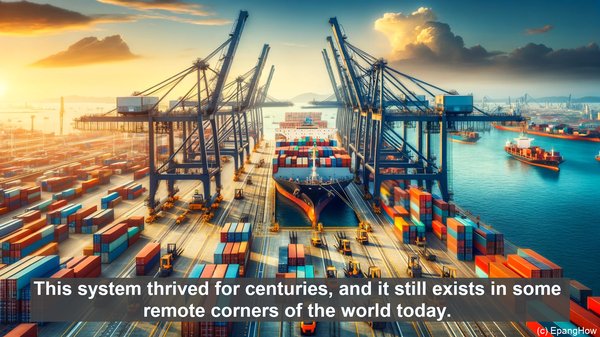Introduction: The Evolution of Economic Systems
Hello everyone! Today, we’re going to explore the fascinating world of economic systems. Specifically, we’ll be diving into the cash economy and the barter economy. These two systems have played pivotal roles in shaping human civilization and trade. So, let’s get started!
The Barter Economy: A System of Trade without Currency
Imagine a world without money. In the barter economy, that’s precisely how transactions were conducted. Instead of using currency, people would exchange goods and services directly. For instance, a farmer might trade a sack of wheat for a pair of shoes from a cobbler. This system thrived for centuries, and it still exists in some remote corners of the world today.
The Cash Economy: The Rise of Currency
As societies grew more complex, the limitations of barter became evident. It was challenging to find someone who had exactly what you needed and was interested in what you had to offer. This led to the emergence of the cash economy, where a universally accepted medium of exchange, such as coins or banknotes, facilitated transactions. Suddenly, trade became more efficient and accessible.
The Advantages and Disadvantages of Barter
While the barter system had its merits, it also had its drawbacks. On the positive side, it encouraged direct interaction between traders, fostering social bonds and trust. Additionally, it allowed for flexible negotiations, where the value of goods could be determined based on their utility. However, the lack of a standardized measure of value and the difficulty of finding suitable trading partners were significant challenges.
The Cash Economy’s Impact on Trade
With the advent of currency, trade underwent a revolution. Suddenly, the limitations of barter were overcome. People could now engage in transactions with anyone, regardless of their immediate needs. This led to the growth of markets, where buyers and sellers could come together, creating a vibrant economic ecosystem. Additionally, the introduction of money as a store of value and a unit of account brought stability and predictability to the economy.

The Modern Economic Landscape: A Blend of Both Systems
In today’s world, we have a hybrid economic system, where elements of both cash and barter exist. While most transactions are conducted using money, there are still instances where barter-like exchanges occur. For example, in the realm of international trade, countries may engage in barter agreements to overcome currency restrictions. Furthermore, the rise of the sharing economy has seen a resurgence of non-monetary exchanges.

